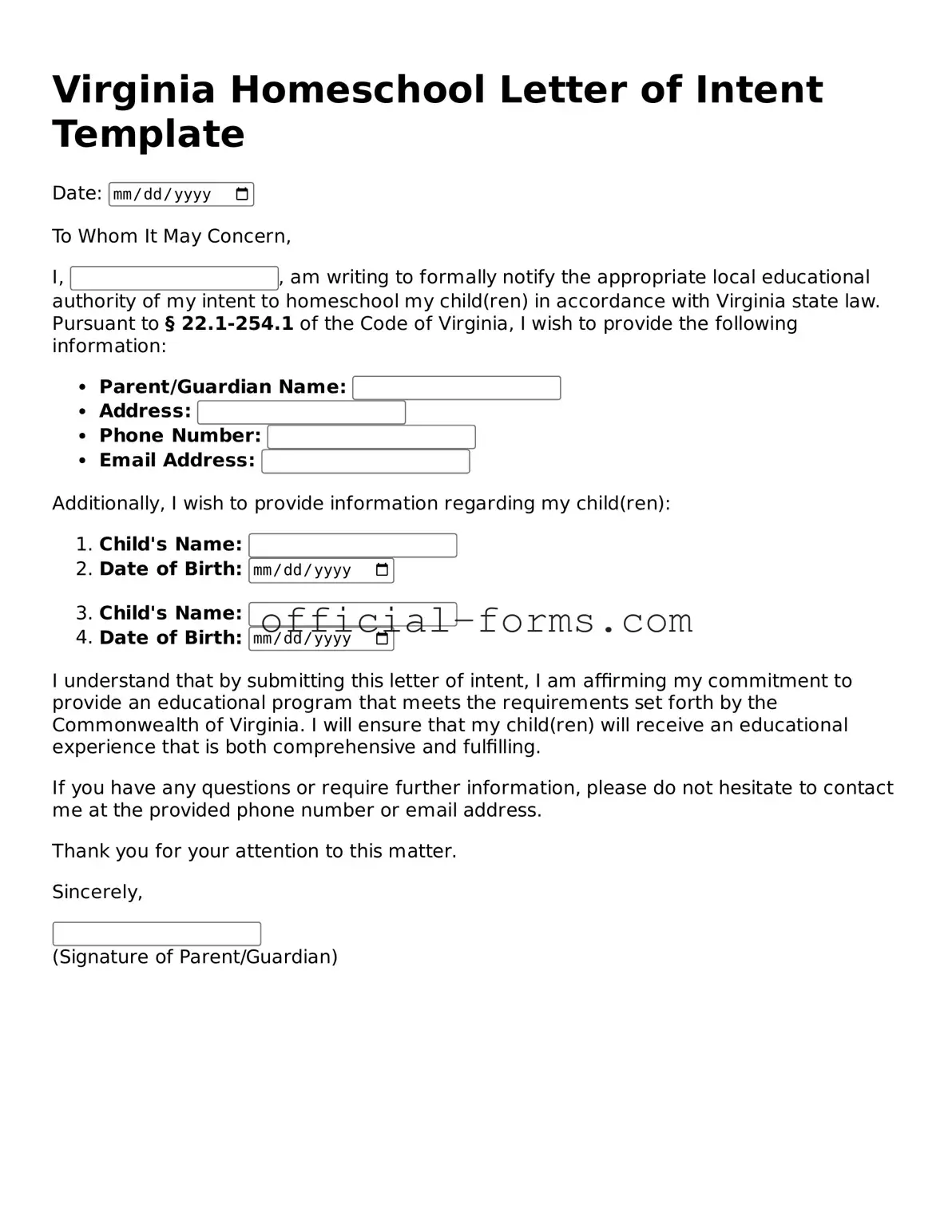Filling out the Virginia Homeschool Letter of Intent form can be straightforward, but many people make common mistakes that can lead to delays or complications. One frequent error is failing to provide all required information. The form asks for specific details about the student, such as their name and age. Omitting any of this information can result in the form being rejected.
Another mistake is not signing the form. A signature is essential to validate the intent to homeschool. Without it, the submission is incomplete. Additionally, some parents forget to include the date when they submit the form. This date is important as it establishes when the homeschooling officially begins.
Many individuals also overlook the requirement to notify the local school district. This notification is not just a formality; it ensures that the district is aware of your homeschooling plans. Failing to notify them can lead to misunderstandings or even legal issues down the line.
Providing inaccurate information is another common pitfall. For instance, listing the wrong grade level or age can create confusion. It’s crucial to double-check all details before submitting the form. Similarly, some people do not keep a copy of their submitted form. Retaining a copy is wise, as it serves as proof of your intent should any questions arise later.
Another mistake involves not following the specific submission guidelines set by the local school district. Each district may have different preferences for how they want to receive the form, whether by mail, email, or in person. Ignoring these guidelines can lead to unnecessary delays.
Additionally, some parents misunderstand the timeline for submission. The form must be submitted by a specific date, usually before the school year begins. Missing this deadline can complicate the homeschooling process. Lastly, failing to update the form when there are changes in circumstances, such as a change of address or a new student, can lead to issues with compliance.
By being aware of these common mistakes, parents can better navigate the process of submitting the Virginia Homeschool Letter of Intent form. Taking the time to review the form and ensuring all details are correct will help ensure a smoother transition into homeschooling.
